
Ditto TV offers 60 Indian TV channels such as Colors, Sony and Zee TV online -- on the mobile, tablet or laptop.
If you are a Vodafone, Airtel or BSNL subscriber, you could pick and choose what you want and get billed by the mobile operator.
After a year of its launch, Ditto TV has 292,000 active users paying anything from Rs 10 to Rs 100, depending on what they buy.
And here is the surprising bit: Ditto TV is the OTT, or over-the-top, arm of the Rs 6,350-crore (Rs 63.5 billion) Zee Group, one of India’s largest media houses.
. . .
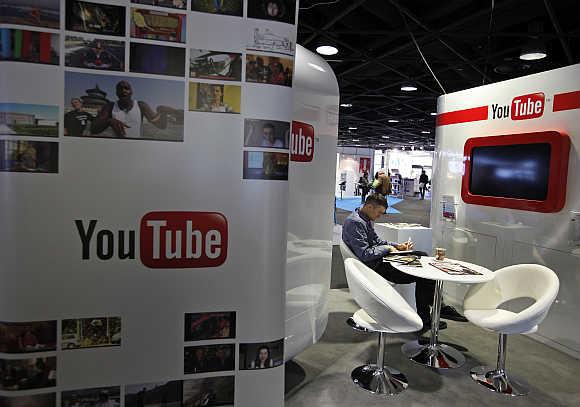
T-Series, India’s largest music company, got more than 90 per cent of its March 2013 revenue of Rs 450 crore (Rs 4.5 billion) from ‘non-physical’ formats.
Some of that is the fees from restaurants for playing its music, while the bulk comes from scores of streaming and download services such as Saavn and Gaana.com or from YouTube.
T-Series has remained the most viewed channel on YouTube for over three years now.
The others among the top ten on YouTube include the Rs 1,074-crore (Rs 10.47-billion) Eros International, India’s largest film studio, the Rs 6,100-crore (Rs 61-billion) Star India, Shemaroo Entertainment, an erstwhile video company which is now a digital content firm, and Rajshri, the digital arm of one of India’s oldest production houses.
. . .

The who’s who of the Rs 83,000-crore (Rs 830-billion) Indian media and entertainment industry is back online, and with gusto.
The growth in mobile devices coupled with an improving bandwidth has liberated millions of Indians.
This in turn has led to an explosion in online video consumption in one of the world’s largest internet markets.
From liftmen and security guards to college students -- more than 227 million Indians are online.
They could be watching films, cricket matches, TV shows, yoga and cookery lessons, among other things, on their mobiles, laptops, tablets, phablets et cetera.
. . .
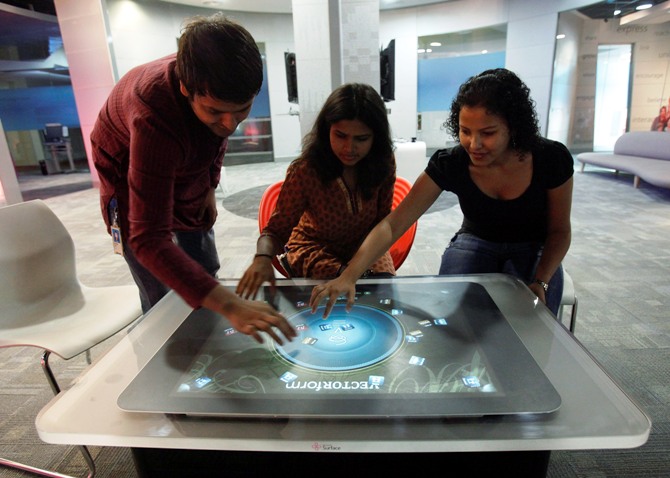
According to comScore, a digital anyalytics company, more than 59 million people went to one video site or the other in November 2013.
The actual figure is larger as the comScore sample doesn’t yet include mobile devices. Even at this level, the total number of people who watched video online is just under 8 per cent of those who watched TV or more than 70 per cent of the 84 million people who walked into a film theatre in 2012. And it is growing in double digits year on year.
If you use Google India’s revenues as a basis, then advertising revenue for just online video was in the range of Rs 800 crore (Rs 8 billion) to Rs 1,000 crore (Rs 10 billion) in 2012.-2013.
. . .
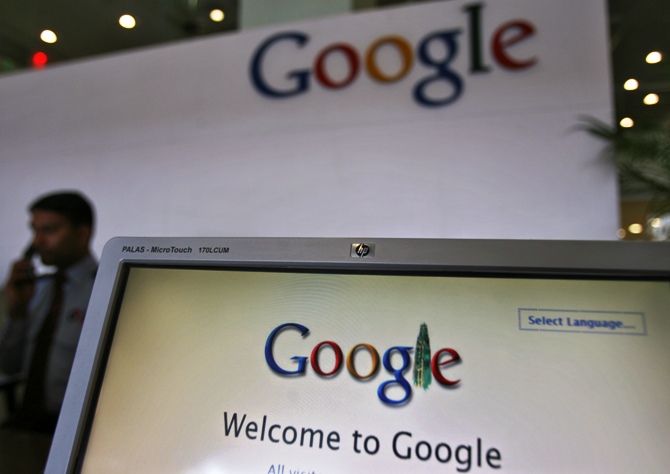
Add an equal amount for pay revenues to this and the total pie becomes almost Rs 2,000 crore (Rs 20 billion).
That is five per cent of the total TV industry revenues or over 17 per cent of the film industry’s revenues.
Now add a couple of more facts.
Over 70-80 per cent of this audience, and revenues thereof, comes from professionally-generated and not user-generated content.
News, entertainment and sports are the mainstay of the video universe, according to comScore.
And, ‘more than 40-50 per cent of the traffic for video sites comes from mobile devices,’ says Neeraj Roy, CEO, Hungama Digital Media.
Both Avendus Capital and Internet and Mobile Association of India recently released reports on the growth of the digital media in India.
. . .

The Avendus report reckons that the share of mobile-only internet users, typically first-time users, is roughly half the total in India, way above the emerging market average of 20-25 per cent.
That means an entirely new generation of viewers who, arguably, do no not watch TV, is coming on board.
This is expanding viewership exponentially.
So is social media which converts word-of-mouth into actual viewership.
When your friend sends you a clip on Facebook, the chances are you will watch it.
Put it all together -- the hunger for online video on the go, the expanding market in both revenues and traffic -- and it is clear why ‘the supply of mainstream content from media houses has been increasing and more TV shows are topping the charts online,’ says Kedar Gavane, senior director, comScore India.
. . .
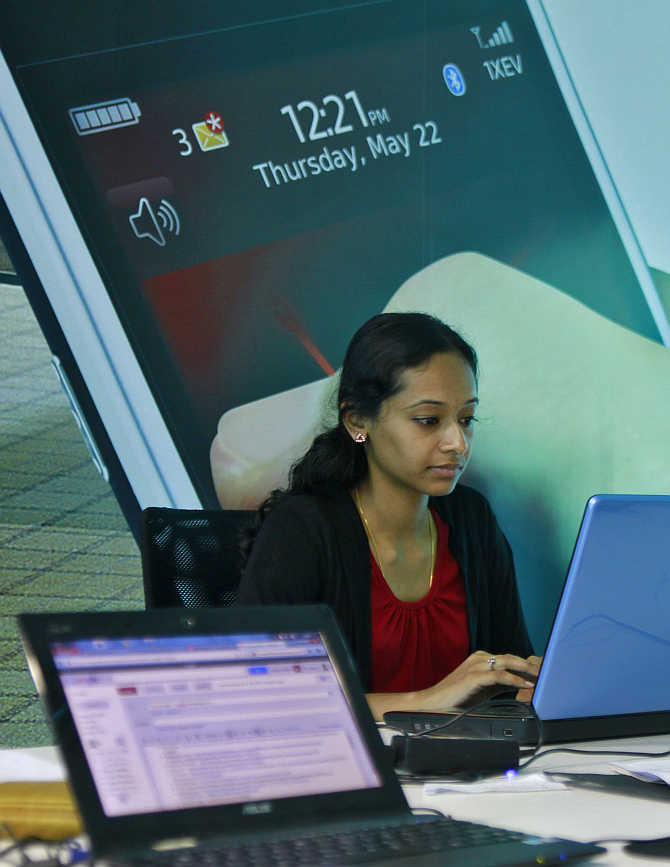
“Five years later, our competition will not be Star TV or Zee TV, it will be YouTube,” declares Raj Nayak, CEO, Colors, Viacom18.
That depends, say analysts, on how a host of factors play out.
The first round of bullishness around the internet in the early part of the millennium faded after bandwidth, the lack of devices and access, and piracy played spoilsport.
This time round, three big issues loom -- the quality of access and data costs, the fragmentation of the market and the perennial question of how to make money online.
The challenges to growth
Star India recently began its second big digital push after 2005.
It has started putting up to one-year-old shows on YouTube and is very active online with its sports content.
Sanjay Gupta, chief operating officer, Star India, reckons that the biggest issue around the growth of online video is the lack of a destination other than YouTube.
. . .
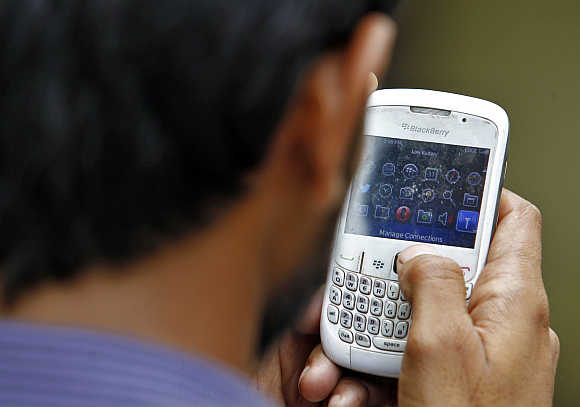
Given the extreme fragmentation and mind-boggling choices that rule the world of online video, a destination brand, such as Hulu or Netflix, is critical, thinks Gupta.
Most industry insiders agree.
With a 58 per cent share of all video traffic in India, YouTube, and with a 90 per cent share of all search traffic, its parent Google are a virtual monopoly.
While YouTube has a reputation for being generous about revenue share, the numbers are still a trickle.
For instance, Colors, which does over Rs 1,100 crore (Rs 11 billion) in top line, gets just 1 per cent or so of its revenues from YouTube, according to estimates.
. . .
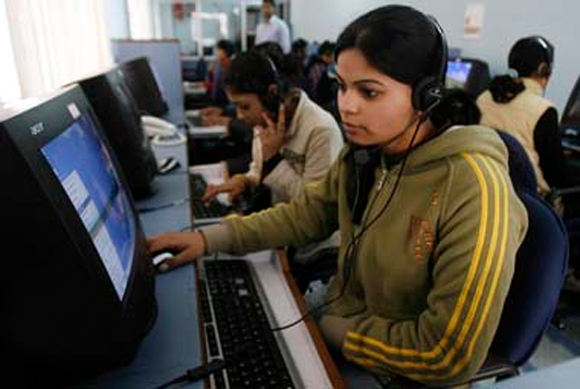
Some of this has to do with the fact that rates for online advertising, though rising, are still abysmal.
Going by estimates by media agencies, the cost of reaching a thousand people online is less than one-fourth of television or print.
This is where telcos could come to the rescue.
Many mobile service providers such as Bharti Airtel are popularising one-rupee videos in their bid to push data services.
Then there is the push for pay revenues from the re-entry of mainstream media companies such as Zee’s Ditto TV.
In the first six months, it had a tough time getting consumers to pay because of the lack of adequate mechanisms on mobile devices.
The image is used for representational purpose only
. . .
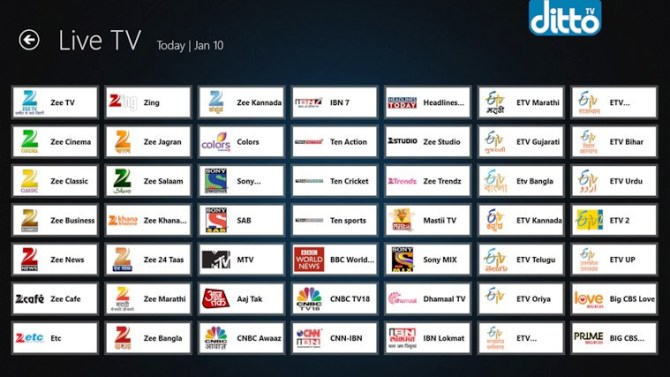
That is when Ditto discovered that the best way to get onto the pay ecosystem was to tie up with firms that have a billing relationship with consumers.
“This could be telecom operators, even your gas or electricity company,” says Manoj Padmanabhan, senior vice-president and business head, Ditto TV.
Then there are some basic factors.
“Today, a large part of the subscriber base is limited by bandwidth,” says Debashish Ghosh, chief knowledge officer, Essel Group -- it owns Zee and, therefore, Ditto TV. “Good quality data costs Rs 100 an hour.
For the market to really shift, data costs have to come down to say Rs 25 an hour,” says Gupta of Star.
Sizing up the future
Most of these challenges are evolutionary rather than systemic.
The big issue is one of keeping pace with the rate at which change is happening on every dimension of the business -- creation, consumption, form, style, metrics et al.
. . .

Take, for instance, the biggest trend highlighted by the rise of online video -- the growth of video-on-demand . ZengaTV was launched in 2009 with 100 channels such as Aaj Tak, Colors and MTV.
In the first two years, 95 per cent of its 7 million unique users came to Zenga to watch live TV, only 5 per cent wanted video-on-demand.
As broadband and devices have spread, Zenga’s unique users have grown to 23 million a month.
And the ratio of live to video-on-demand content has shifted to 65:35.
For others, the ratio is closer to 50:50.
“Content consumption is happening on search, so people ask for a specific thing, say yoga, food,” says Shabiir Momin, co-founder, Zenga TV.
Then there is usage which changes with devices. So people on tablets tend to watch longer videos of say 30-40 minutes, while those on the mobile watch videos of 10-15 minutes.
. . .

This changes everything -- the way you think, create and serve content, and even advertising.
From linear, appointment-based broadcasting, the model has to shift to on-demand ‘content.’
None of the broadcast or film firms I spoke to identify themselves as such -- they call themselves ‘content companies’.
So do scores of other firms such as Pocket Films or FameBox.
Pocket Films claims to be YouTube’s number-one partner on alternative content, short films and Indies (independent films).
It has 2,700 films online and gets ‘80,000-100,000 views a day,’ says Managing Director Saameer Mody.
. . .
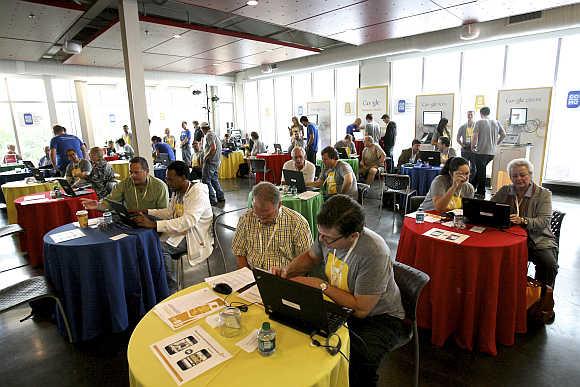
FameBox, which was set up just two months ago, specialises in showcasing talent or celebrities such as Harsha Bhogle on YouTube.
“We expect a rise in customised, special, made-for-digital content,” says Dhruvank Vaidya, business head, FameBox.
“I don’t think anybody has any idea what will happen or has the ability to predict things,” says Momin.
He points to Zenga which began as a content aggregator, turned into a mobile broadcaster and is today a hybrid firm doing everything from content generation to broadcast.
Punit Goenka, managing director and CEO, Zee Entertainment, agrees, “There are a lot of hits and misses on new media.
“We could bet on ten ideas of which only one or two might work.
“We don’t even know if the current content will work on this media.” Ditto that.